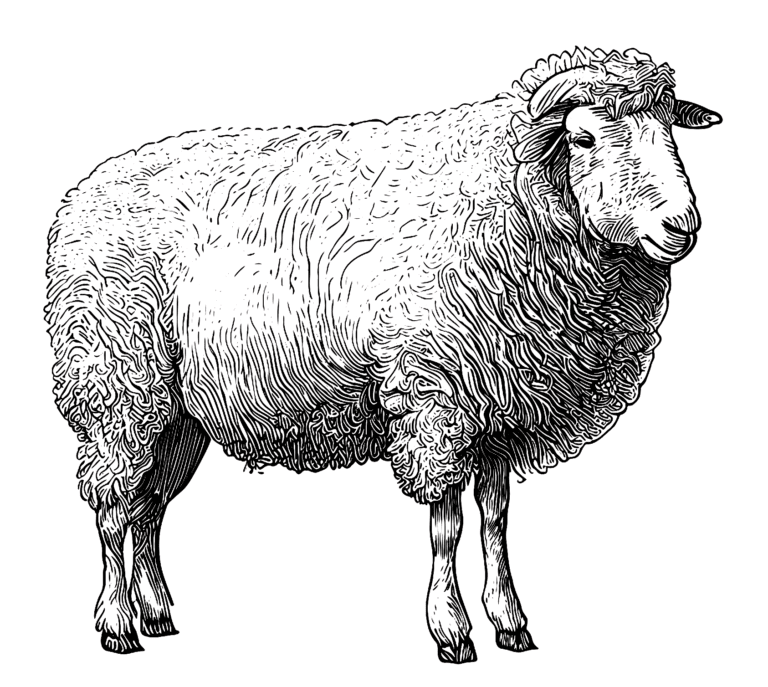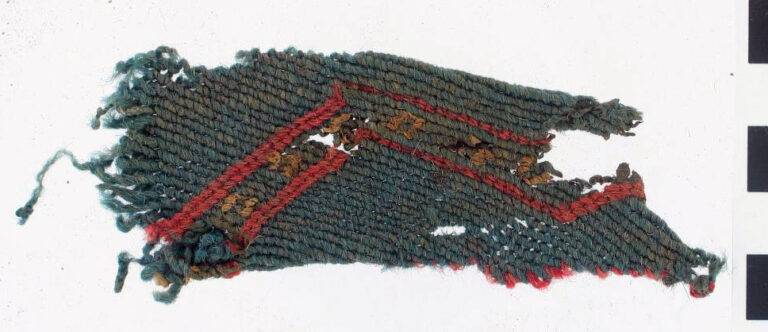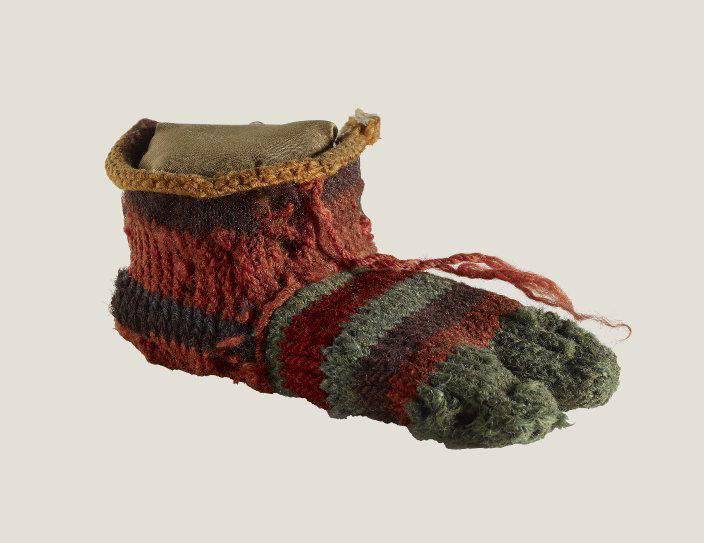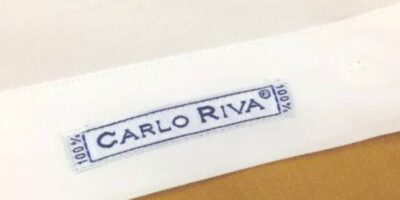Wool is a protein fiber that has been used for clothing and textiles for thousands of years. It is obtained from the fleece of sheep. Wool fibers have many unique features that set them apart from other fibers, including their insulation properties, natural elasticity, and resistance to wrinkles and odors. One of the most notable features of wool fiber is its ability to insulate. The overlapping scales of wool fibers create pockets of insulating air, allowing wool to retain heat and keep the wearer warm even in wet conditions. Wool can also absorb up to 30% of its weight in moisture without feeling wet, making it an ideal material for outdoor clothing and activewear.
Another important feature of wool fiber is its natural elasticity. Wool fibers can stretch up to 30% of their original length without breaking and will return to their original shape when released, making wool clothing form-fitting and comfortable. Additionally, wool fibers resist wrinkling and creasing, making wool clothing easy to care for and maintain. Wool is also naturally resistant to odors and stains due to its structure, which repels water and dirt. Wool has natural antimicrobial properties that inhibit the growth of odor-causing bacteria, making it ideal for activewear and outdoor clothing. Wool fiber is also incredibly durable and long-lasting, resisting tearing and pilling, with a natural crimp that helps it maintain its shape and resist matting or felting.
Aside from these unique features, wool fiber has several other advantages over synthetic or other natural fibers. Wool is a renewable resource that is biodegradable and compostable, making it an environmentally friendly choice. Additionally, wool is naturally flame-resistant, making it a safer choice for clothing and textiles.
シルクは天然タンパク質繊維の一種で、織物を作るために使用することができます。この繊維は主にフィブロインで構成されており、ある種の昆虫の幼虫が繭を作ることで生成されます。シルクの最も有名な供給源は、一般的に飼育されている桑蚕の幼虫の繭から得られるものです。 絹の印象的な玉虫色の外観は、絹繊維のプリズムのような形状に起因しています。この形状により、入射した光がさまざまな角度で屈折し、絹織物から連想されるさまざまな色が生み出されるのです。
絹を生産できる昆虫はいくつかありますが、繊維の製造に最もよく使われているのは蛾の毛虫です。しかし、研究者たちは、分子レベルで異なる他のタイプのシルクを探っています。シルクは主に昆虫の幼虫が完全変態することで生産されますが、網目模様の昆虫やガラガラヘビなど、生涯を通じてシルクを生産できる昆虫もいます。 昆虫以外にも、ヒメバチ類(ハチ、スズメバチ、アリ)、シルバーフィッシュ、トビケラ、カゲロウ、アザミウマ、ヨコバイ、カブトムシ、ヒョウタン、ノミ、ハエ、ミドリムシなどの生物でシルクが生産されます。また、クモなどのクモ類も絹を生産することで知られています。
Cave painting (source: The Moravian Museum)
野生の羊は元々毛深いものだったが、やがて人間は羊毛の多い羊を選択的に繁殖させるようになった。イランの遺跡から出土した考古学的証拠によると、この品種改良は紀元前6000年頃に始まったとされているが、最古のウール製織物衣服が作られたのはそれから2000〜3000年後である。その後、紀元前4千年紀初頭に近東からヨーロッパに羊毛が伝わり、デンマークの沼地で紀元前1500年頃のヨーロッパ最古の羊毛織物が発見された。鋏が発明される以前は、羊毛は通常、手や青銅の櫛を使って摘み取られていた。ローマ時代のヨーロッパでは、ウール、リネン、レザーが衣料品の主な素材であり、インド産のコットンは博物学者のみが知る珍品、中国からシルクロードを通って輸入されたシルクは贅沢品と見なされていた。プリニウスの『博物誌』によると、タレントゥムは羊毛の産地として知られ、厳選された羊毛は優れた毛を持つが、特別な手入れが必要であった。交易の拡大とともに、羊毛布の生産はフランスのプロヴァンなどの小さな都市で重要な経済活動となり、やがてヨーロッパ全土に広がっていった。プロヴァンからナポリ、シチリア、キプロス、マヨルカ島、スペイン、コンスタンティノープルなど、他の地域へ羊毛を広めるために、毎年開催されたシャンパーニュ市が重要な役割を担ったのである。13世紀には、羊毛貿易は低地地方と中部イタリアの経済エンジンとなり、14世紀末にはイタリアが羊毛生産の主要な中心地となったのである。フィレンツェの羊毛組合アルテ・デッラ・ラナはイギリスの羊毛を輸入してサン・マルティーノ修道院で加工し、ガルボ工房はアブルッツォのイタリア羊毛やスペインのメリノウールを加工していた。しかし、やがてイタリアのレヴァントへの羊毛輸出は衰退し、16世紀には絹織物の生産に取って代わられた。
English raw wool exports were highly valuable and were only rivaled by the 15th-century sheepwalks of Castile. It was a significant source of income for the English crown, which imposed an export tax called the “Great Custom” in 1275. The importance of wool to the English economy was highlighted by the fact that since the 14th century, the presiding officer of the House of Lords sat on the “Woolsack”, a chair stuffed with wool. Cistercian houses instituted economies of scale by accumulating great tracts of land during the 12th and early 13th centuries, baling and shipping raw wool from North Sea ports to the textile cities of Flanders, such as Ypres and Ghent, where it was dyed and worked up as cloth. During the 15th century, the English textile trade grew to the point where export of wool was discouraged. Various British laws controlled the wool trade or required the use of wool, even in burials. The smuggling of wool out of the country, known as owling, was punishable by the cutting off of a hand. After the Restoration, fine English woolens began to compete with silks in the international market, partly aided by the Navigation Acts. In 1699, the English crown forbade its American colonies to trade wool with anyone but England herself.
The value of woolen textiles was largely in the dyeing and finishing of the woven product. The manufacturing process was subdivided into a collection of trades, overseen by an entrepreneur in a system called the “putting-out” system or “cottage industry”. The Verlagssystem by the Germans was similar. In this system, the entrepreneur provides the raw materials and an advance, with the remainder being paid upon delivery of the product. Written contracts bound the artisans to specified terms, effectively bypassing the guilds’ restrictions.
Before the Renaissance, the Medici and other great banking houses of Florence built their wealth and banking system on their textile industry based on wool, overseen by the Arte della Lana, the wool guild. Wool textile interests guided Florentine policies. The sheepwalks of Castile were controlled by the Mesta union of sheep owners. They shaped the landscape and fortunes of the meseta that lies in the heart of the Iberian peninsula. In the 16th century, a unified Spain allowed export of Merino lambs only with royal permission. The German wool market, based on sheep of Spanish origin, did not overtake British wool until comparatively late. The Industrial Revolution introduced mass production technology into wool and wool cloth manufacturing. Australia’s colonial economy was based on sheep raising, and the Australian wool trade eventually overtook that of the Germans by 1845, furnishing wool for Bradford, which developed as the heart of industrialized woolens production.
Wool production has significantly decreased due to the growing popularity of synthetic fibers, resulting in reduced demand and declining prices. The collapse in wool prices began in late 1966, with occasional interruptions, and has since continued to trend downward. As a result, there has been a sharp reduction in wool production and a shift towards producing other commodities, such as meat, among sheep growers. To address the challenges faced by the wool industry, superwash wool technology was introduced in the early 1970s. This innovative process involves treating wool fibers to make them machine washable and suitable for tumble-drying. The process involves either using an acid bath to remove the scales from the fiber or coating the fiber with a polymer to prevent shrinkage caused by scales attaching to each other. Superwash wool is known for its longevity, durability, and ability to retain its shape, surpassing synthetic materials in quality.
Despite the decline in demand for wool due to the increased use of synthetic fibers, there are still exceptional wool fibers that fetch high prices at auction. For example, in December 2004, a bale of wool with an average micron of 11.8 sold for an impressive AU$3,000 per kilogram in Melbourne. In June 2008, a bale with an average micron of 11.6 sold for a seasonal record of AU$2,690 per kilogram.In 2007, a Japanese company introduced a wool suit that can be washed in the shower and dries off ready to wear within hours, without requiring ironing. Made from Australian Merino wool, this technology allows woolen products to be cleaned at home without the need for professional dry-cleaning.Recognizing the importance of natural fibers like wool, the United Nations General Assembly declared 2009 as the International Year of Natural Fibres. Despite the challenges faced by the wool industry, new technologies and innovations continue to support the production of high-quality wool products.
合成繊維の普及により羊毛の生産量は大幅に減少し、需要の減少と価格の下落を招いた。羊毛価格の暴落は1966年末に始まり、時折中断しながらも、その後も下落傾向が続いている。その結果、羊毛の生産量は激減し、羊毛生産農家は食肉など他の商品の生産にシフトしている。このような羊毛産業の課題を解決するために、1970年代前半にスーパーウォッシュウール技術が導入された。これは、ウール繊維を洗濯機で洗えるようにし、タンブル乾燥に適した状態にする画期的な加工方法です。この工程では、酸浴によって繊維からウロコを取り除くか、ポリマーで繊維をコーティングしてウロコ同士がくっつくことによる収縮を防ぐ。スーパーウォッシュウールは、長持ちし、耐久性があり、型崩れしにくいという特徴があり、品質面では合成繊維を凌ぐと言われています。化学繊維の普及によりウールの需要は減少しているが、オークションでは高値で取引される優れたウール繊維が存在する。例えば、2004年12月、メルボルンで平均ミクロン11.8の羊毛が1キログラムあたり3,000オーストラリアドルという高値で落札され、2008年6月には、平均ミクロン11.8の羊毛が1キログラムあたり3,000オーストラリアドルで落札された。2007年には、シャワーで洗って数時間で乾く、アイロン不要のウールスーツが日本の企業によって発表された。この技術は、オーストラリア産のメリノウールを使用し、プロのドライクリーニングに頼らずに家庭でウール製品をクリーニングすることを可能にします。ウールなどの天然繊維の重要性を認識し、国連総会は2009年を「国際天然繊維年」と宣言しました。ウール産業が直面している課題にもかかわらず、新しい技術やイノベーションが高品質のウール製品の生産を支え続けている。
Italy has a rich history of wool production and processing, dating back to the Middle Ages and Renaissance when the country became a major center of woolen textiles production. During the Middle Ages, wool production became an important part of the Italian economy, particularly in cities such as Florence and Venice.
Florence and Venice were two of the major centers of wool production and trade in Italy during the Middle Ages and Renaissance.
In Florence, wool production and processing became a major industry in the 13th and 14th centuries. The city’s wool merchants and textile producers formed powerful guilds, which played a major role in the city’s political and economic life. The city became famous for its high-quality woolen textiles, which were prized throughout Europe for their beauty and quality.One of the most famous types of woolen fabric produced in Florence was the “cloth of gold,” a luxurious fabric woven with gold thread that was highly prized by royalty and nobility. Florence also became a center of woolen dyeing, with the city’s textile producers developing a wide range of vibrant colors using natural dyes.
Venice, meanwhile, became a major center of wool trade during the Middle Ages and Renaissance. The city’s location on the Adriatic Sea made it an ideal port for the import and export of wool and other goods, and Venice’s powerful merchants and traders became major players in the European wool trade.Venetian woolen textiles were known for their fine quality and craftsmanship, with the city’s textile producers developing a wide range of fabrics, including woolen velvets, damasks, and brocades. Venetian textiles were highly prized by royalty and nobility throughout Europe, and the city’s wool industry continued to flourish throughout the centuries.
By the Renaissance, Italian woolen textiles had become famous throughout Europe for their beauty and quality. Italian woolen fabrics were highly prized by royalty and nobility, and the country’s wool industry continued to expand and innovate, with new techniques and designs being developed.
In the 19th and 20th centuries, Italy’s wool industry continued to flourish, with the country becoming a leading producer of high-quality woolen textiles and other woolen goods. Italian wool was prized for its softness, warmth, and durability, and was used in a wide range of products, from clothing and textiles to carpets, rugs, and upholstery. Today, Italy remains an important player in the global wool industry, with high-quality woolen textiles and other woolen goods continuing to be produced in the country. Italian wool is known for its superior quality and craftsmanship, and is used in a wide range of luxury products, from high-end clothing and accessories to high-quality interior design products.
イタリアの羊毛生産と加工の歴史は古く、中世からルネッサンス期にかけて毛織物生産の一大中心地となった。中世には、特にフィレンツェやヴェネチアなどの都市で羊毛生産がイタリア経済の重要な部分を占めるようになった。フィレンツェとヴェネツィアは、中世からルネサンス期にかけて、イタリアにおける羊毛生産と貿易の二大中心地であった。フィレンツェでは、13世紀から14世紀にかけて羊毛の生産と加工が主要な産業となった。フィレンツェの羊毛商人や織物業者は強力なギルドを形成し、都市の政治・経済において大きな役割を果たした。フィレンツェの毛織物は、その美しさと品質の高さからヨーロッパ全土で珍重され、特に金糸で織られた「黄金の布」は、王侯貴族に珍重された。また、フィレンツェは毛織物染色の中心地となり、天然染料を使った鮮やかな色彩の織物が開発された。一方、ベネチアは中世からルネサンス期にかけて毛織物貿易の中心地となった。アドリア海に面するベニスは、羊毛や物資の輸出入に適した港であり、ベニスの有力商人たちはヨーロッパの羊毛貿易の中心的存在となった。ベニスの毛織物は品質と職人技で知られ、毛織物ベルベット、ダマスク、ブロケードなど、さまざまな織物が開発された。ベネチアの織物はヨーロッパの王侯貴族に珍重され、何世紀にもわたって毛織物産業が盛んになった。ルネサンス期には、イタリアの毛織物はその美しさと品質の高さでヨーロッパ中に知れ渡るようになった。イタリアの毛織物は王侯貴族に珍重され、同国の毛織物産業は拡大と革新を続け、新しい技術やデザインが開発された。19世紀から20世紀にかけて、イタリアの羊毛産業は繁栄を続け、高品質の毛織物をはじめとする毛織物の一大生産地となった。イタリアンウールは、その柔らかさ、暖かさ、耐久性から珍重され、衣料品や織物、カーペット、ラグ、椅子張りなど幅広い製品に使用された。現在もイタリアは世界のウール産業において重要な位置を占めており、高品質のウールテキスタイルやその他のウール製品の生産が続けられている。イタリアンウールは、その優れた品質と職人技で知られ、高級衣料品やアクセサリー、高品質なインテリア製品など、幅広い高級品に使用されています。
France has a long and storied history of wool production and trade, dating back to the Middle Ages and continuing through to the present day.During the Middle Ages, wool production became an important part of the French economy, particularly in the northern regions of the country. French wool was highly prized for its softness and quality, and was used in a wide range of textiles, from clothing and bedding to tapestries and carpets.By the Renaissance, French woolen textiles had become famous throughout Europe for their beauty and quality. The country’s wool industry continued to expand and innovate, with new techniques and designs being developed.During the 17th and 18th centuries, French wool production and trade continued to flourish, with the country becoming a major player in the global wool industry. The French wool trade was dominated by powerful merchant guilds, which controlled the production and sale of woolen textiles and played a major role in the political and economic life of the country.
In the 19th and 20th centuries, France’s wool industry continued to evolve, with new technologies and production methods being developed. French wool was used in a wide range of products, from clothing and textiles to carpets, rugs, and upholstery.Today, France remains an important player in the global wool industry, with high-quality woolen textiles and other woolen goods continuing to be produced in the country. French wool is known for its superior quality and craftsmanship, and is used in a wide range of luxury products, from high-end clothing and accessories to high-quality interior design products.
中世のフランスでは、特に北部で羊毛の生産が盛んであった。ルネッサンス期には、フランスの毛織物はその美しさと品質の高さでヨーロッパ全土に知られるようになり、フランス産のウールは、衣服や寝具、タペストリーやカーペットなど、さまざまなテキスタイルに使われた。17世紀から18世紀にかけて、フランスの羊毛生産と貿易はますます盛んになり、世界の羊毛産業における主要なプレーヤーとなった。フランスの羊毛貿易は、強力な商人ギルドによって支配され、毛織物の生産と販売をコントロールし、国の政治・経済において大きな役割を担っていた。19世紀から20世紀にかけても、フランスの羊毛産業は進化を続け、新しい技術や生産方法が開発された。現在もフランスは世界の羊毛産業において重要な位置を占めており、高品質の羊毛織物や羊毛製品が生産されている。フランス産のウールは、その優れた品質と職人技で知られ、高級衣料やアクセサリー、高品質なインテリア製品など、さまざまな高級品に使用されている。フランスには、ウールの生産とテキスタイルで有名な都市がいくつかある。
Wool has played an important role in Germany’s history for centuries. Sheep were first domesticated in the region that is now modern-day Iran about 10,000 years ago, and they were introduced to Germany by the Celts around 500 BC. By the Middle Ages, wool production had become a major industry in Germany, particularly in the regions of Saxony, Thuringia, and Franconia.During the 14th and 15th centuries, Germany’s wool industry experienced a period of growth and expansion, with woolen textiles becoming a major export commodity. The Hanseatic League, a confederation of merchant guilds and trading cities in northern Europe, played an important role in the development of the wool trade in Germany, with cities like Lübeck, Hamburg, and Bremen becoming major centers of woolen textile production and trade.
In the 16th and 17th centuries, the wool industry in Germany continued to expand, with the establishment of guilds and regulations to govern the production and sale of woolen textiles. However, the industry began to decline in the 18th and 19th centuries, as new materials like cotton and silk became more popular, and as the Industrial Revolution led to the development of new manufacturing techniques.Today, Germany’s wool industry is relatively small, but there are still many sheep farmers and wool producers in the country. Woolen textiles are still produced in some regions, particularly in the form of high-quality woolen fabrics used in traditional Bavarian clothing like lederhosen and dirndls. Additionally, there is a growing interest in sustainable and eco-friendly textiles, and many consumers are turning to wool as a natural and renewable alternative to synthetic materials.
ウールは何世紀にもわたってドイツの歴史において重要な役割を担ってきた。羊は約1万年前に現在のイランで初めて家畜化され、紀元前500年頃にケルト人によってドイツに導入された。中世になると、ザクセン、テューリンゲン、フランケン地方を中心に羊毛生産が盛んになった。 14世紀から15世紀にかけて、ドイツの羊毛産業は成長・拡大期を迎え、羊毛織物は主要な輸出品となった。北欧の商人ギルドと貿易都市の連合体であるハンザ同盟は、ドイツの羊毛貿易の発展に重要な役割を果たし、リューベック、ハンブルク、ブレーメンなどの都市は、羊毛繊維の生産と貿易の主要な中心地となった。16世紀から17世紀にかけて、ドイツにおける羊毛産業は拡大を続け、ギルドの設立や毛織物の生産・販売に関する規制が設けられた。しかし、18世紀から19世紀にかけて、綿や絹などの新素材が普及し、産業革命によって新しい製造技術が開発されると、産業は衰退の一途をたどることになる。 現在、ドイツの羊毛産業は比較的小規模だが、国内にはまだ多くの羊毛農家や羊毛生産者がいる。特にバイエルン州の伝統的な服装であるレーダーホーゼンやディルンドルに使われる高級毛織物は、今でも一部の地方で生産されている。また、持続可能で環境に優しい繊維製品への関心が高まっており、多くの消費者が合成素材に代わる天然・再生可能な素材としてウールに注目しています。
Flanders, which is now part of Belgium and northern France, has a long and rich history of wool production and trade dating back to the Middle Ages.During the medieval period, Flanders was one of the wealthiest regions in Europe, and wool production and trade were major drivers of the economy. The region’s wool industry was based on the breeding of sheep, the production of woolen textiles, and the export of finished products to other parts of Europe.
Flemish wool was known for its high quality and softness, and was used in a wide range of products, including clothing, tapestries, and carpets. The Flemish wool trade was dominated by powerful merchant guilds, which controlled the production and sale of woolen textiles and played a major role in the political and economic life of the region.During the Renaissance, Flanders remained a center of wool production and trade, with new techniques and designs being developed. Flemish woolen textiles became famous throughout Europe for their beauty and quality, and the region’s textile industry continued to grow and evolve.
In the 19th and 20th centuries, Flanders’ wool industry continued to adapt to changing economic conditions and technological advancements. The region’s textile mills and factories adopted new machinery and production methods, and began to produce a wider range of products, from clothing and textiles to carpets, rugs, and upholstery.
Why does Flanders have a history of wool?
中世のフランドル地方は、ヨーロッパでも有数の豊かな地域であり、羊毛の生産と貿易が経済の中心であった。この地域の羊毛産業は、羊の飼育、毛織物の生産、そして完成品のヨーロッパ各地への輸出を基盤としていた。フランドル地方の羊毛は高品質で柔らかいことで知られ、衣類、タペストリー、カーペットなど幅広い製品に使われた。ルネサンス期にもフランドルは羊毛の生産と貿易の中心地であり、新しい技術やデザインが開発された。フランドル地方の毛織物は、その美しさと品質の高さでヨーロッパ中に知られるようになり、この地方の繊維産業は成長と発展を続けた。
19世紀から20世紀にかけて、フランドルの毛織物産業は、経済状況の変化や技術の進歩に適応し続けました。この地域の織物工場は新しい機械や生産方法を取り入れ、衣類や織物、カーペット、ラグ、椅子張りなど、より幅広い製品を生産するようになった。
Wool has played a significant role in England’s history and economy for centuries. England has a long history of sheep farming and wool production, dating back to the medieval period. In the Middle Ages, wool production was a major industry in England. The country’s mild climate and abundant grazing land made it an ideal location for sheep farming, and the wool trade became a major source of income for many English landowners. Wool was sold to textile producers in Europe, where it was spun and woven into cloth.
ウールは、何世紀にもわたってイングランドの歴史と経済において重要な役割を担ってきました。イングランドには、羊の飼育と羊毛生産の長い歴史があり、その歴史は中世にさかのぼります。中世のイングランドでは、羊毛の生産が主要な産業であった。温暖な気候と豊かな放牧地が羊の飼育に適しており、羊毛の取引は多くのイングランドの地主の主要な収入源となった。羊毛はヨーロッパの織物業者に売られ、そこで紡がれ、布に織られた。16世紀のチューダー王朝時代、イングランドでは羊毛の生産と取引が最盛期を迎えた。ヨーロッパ随一の羊毛の産地となり、羊毛貿易は経済の大きな支えとなった。羊毛貿易がもたらした富は、チューダー朝の豪邸建設やイギリスの都市拡張の資金源となった。羊毛貿易は、その後の数世紀にもイギリス経済の重要な部分を占め続けた。18世紀から19世紀にかけて、産業革命が羊毛産業に大きな変化をもたらした。紡績用ジェニーや力織機などの技術の進歩により、毛織物の大量生産が可能になったのである。このため、イングランドでは、特に北部を中心に大規模な繊維工場が建設された。20世紀には、ポリエステルやナイロンなどの合成繊維が普及し、イギリスのウール産業は衰退した。しかし、羊毛は今でもイギリス経済と伝統の重要な一部である。特に、ブルーフェイス・レスターやウェンズリーデールといった品種の高品質な羊毛は、現在でも重要な産地である。また、近年では、持続可能で倫理的な羊毛生産への関心が高まり、イングランドの羊毛産業は復活を遂げました。今日、イングランドには伝統的な毛織物工場が数多くあり、現在でも羊毛を紡いで高品質の織物を作っている。この国の豊かなウールの遺産は、毎年開催される「ウール・ウィーク」などのイベントで称えられ、最高の英国ウールを紹介し、持続可能なウール生産を推進しています。
In the Middle Ages, wool production was an important industry in Scotland. The country’s rugged terrain and harsh climate made it difficult to grow crops, so sheep farming and wool production became an essential source of income for many Scottish landowners. Wool was sold to textile producers in Europe, where it was spun and woven into cloth.During the 18th and 19th centuries, the wool industry in Scotland experienced significant growth. Advances in technology, such as the spinning jenny and the power loom, allowed for the mass production of woolen textiles. This led to the growth of large-scale textile factories in Scotland, particularly in the Lowlands.The wool industry in Scotland continued to grow in the early 20th century, with the country becoming a major producer of tweed and other woolen textiles. The traditional Scottish woolen mills, such as Harris Tweed and Johnstons of Elgin, became world-famous for their high-quality woolen textiles.
However, the wool industry in Scotland experienced a decline in the mid-20th century, as synthetic fibers such as polyester and nylon became more popular. This led to a decline in the number of sheep farms and woolen mills in Scotland.Today, the wool industry in Scotland is still an important part of the country’s economy and heritage. Scottish wool is known for its high quality and unique characteristics, such as the distinctive patterns and colors of Harris Tweed. Many traditional woolen mills in Scotland have adapted to changing market conditions by focusing on sustainable and ethical wool production.Scotland is also home to a number of initiatives aimed at promoting the use of Scottish wool and supporting the country’s sheep farming communities. For example, the Campaign for Wool, which was founded by Prince Charles, works to raise awareness of the benefits of wool and support sustainable wool production in Scotland and around the world.
中世のスコットランドでは、羊毛生産は重要な産業でした。険しい地形と厳しい気候のため作物の栽培が難しく、牧羊と羊毛生産は多くのスコットランドの地主にとって不可欠な収入源となった。羊毛はヨーロッパの織物業者に売られ、そこで紡がれ、布に織られた。 18世紀から19世紀にかけて、スコットランドの羊毛産業は大きな発展を遂げた。紡績用ジェニーや力織機などの技術の進歩により、毛織物の大量生産が可能になったのである。その結果、スコットランド、特にローランド地方に大規模な織物工場が建設された。 20世紀初頭、スコットランドの羊毛産業は成長を続け、ツイードなどの毛織物の一大生産地となった。ハリス・ツイードやエルジンのジョンストンズなど、スコットランドの伝統的な毛織物工場は、高品質の毛織物で世界的に有名になった。しかし、20世紀半ばになると、ポリエステルやナイロンなどの合成繊維が普及し、スコットランドの毛織物産業は衰退した。そのため、スコットランドの羊牧場や毛織物工場は減少していった。 現在でも、スコットランドの羊毛産業は、国の経済と遺産を支える重要な役割を担っています。スコットランドの羊毛は、ハリスツイードの特徴的な模様や色など、高品質でユニークな特徴を持つことで知られています。スコットランドの多くの伝統的な毛織物工場は、持続可能で倫理的な羊毛生産に注力することで、変化する市場環境に適応しています。 また、スコットランドには、スコットランド産ウールの利用促進や、国内の羊農家を支援することを目的としたイニシアチブが数多くあります。例えば、チャールズ皇太子が創設したCampaign for Woolは、ウールの利点に対する認識を高め、スコットランドをはじめ世界各地で持続可能なウール生産を支援するために活動しています。
The wool industry in Ireland began to develop in earnest in the Middle Ages, when wool became a major export commodity. The wool trade was controlled by wealthy merchants, who purchased raw wool from Irish farmers and sold it to textile mills in England and other European countries. During the 18th and 19th centuries, the wool industry in Ireland flourished, with many local mills and factories producing high-quality woolen textiles. These textiles were used for a variety of purposes, from clothing and blankets to upholstery and carpeting.
One of the most famous types of Irish wool is Donegal tweed, which is made from a unique blend of wool and other fibers, such as silk or cashmere. Donegal tweed is known for its distinctive flecks of color, which come from the natural hues of the wool and other fibers.
Donegal tweed is a type of woolen fabric that originated in County Donegal, Ireland, in the late 19th century. It is characterized by its colorful flecks or “neps” that are woven into the fabric, creating a distinctive texture and appearance.The wool used to make Donegal tweed comes from sheep that graze on the rugged hills and moors of Donegal, where the harsh weather conditions help produce a hardy, resilient fleece. The wool is then spun into yarn and dyed with natural plant and mineral dyes to create a range of colors.The unique flecks in Donegal tweed are created by adding small amounts of other fibers, such as silk or cashmere, to the wool yarn before it is woven. These fibers are typically dyed in contrasting colors to the wool, creating a subtle but striking effect.
Donegal tweed was traditionally used for outerwear such as jackets, caps, and coats, as it is thick, warm, and durable. However, in recent years it has become popular for a wide range of clothing and accessories, including sweaters, scarves, and hats.The production of Donegal tweed is still centered in County Donegal, where many small mills and workshops continue to produce the fabric using traditional methods. In recognition of its cultural and historical significance, Donegal tweed was granted Protected Geographical Indication (PGI) status by the European Union in 1997, meaning that only tweed produced in County Donegal using traditional methods can be labeled as “Donegal tweed.”
アイルランドの羊毛産業が本格的に発展し始めたのは、羊毛が主要な輸出品となった中世の頃である。羊毛貿易は裕福な商人たちによって支配され、彼らはアイルランドの農家から原毛を購入し、イングランドや他のヨーロッパ諸国の織物工場に販売していました。18世紀から19世紀にかけて、アイルランドの羊毛産業は繁栄し、多くの製糸工場が高品質の羊毛繊維を生産しました。これらの織物は、衣類や毛布、椅子張りやカーペットなど、様々な用途に使用されました。
アイリッシュウールの代表的なものにドニゴール・ツイードがある。これは、ウールにシルクやカシミアなどの他の繊維を独自にブレンドして作られる。ドネガルツイードは、ウールや他の繊維の自然な色合いから生まれる独特の斑点が特徴です。
ドネガルツイードは、19世紀後半にアイルランドのドネゴール州で生まれた毛織物です。ドニゴールツイードの原料となる羊毛は、ドニゴールの荒れた丘陵地帯で放牧されたもので、厳しい気象条件のもと、丈夫で弾力性のある毛皮が生産されます。ドネガルツイード独特の斑点は、ウール糸を織る前に、シルクやカシミアなどの他の繊維を少量加えることで生まれます。ドネガルツイード独特の斑点は、織る前にウール糸にシルクやカシミアなどの繊維を少量加えて染めたもので、ウールと対照的な色に染められ、繊細ながらも印象的な効果を生み出します。
ドネガルツイードは、厚手で暖かく、耐久性に優れているため、従来はジャケットやキャップ、コートなどのアウターウェアに使用されていました。ドニゴールツイードの生産は現在もドニゴール州を中心に行われており、多くの小さな工場や工房が伝統的な製法でツイードを生産し続けています。ドニゴール・ツイードは、その文化的・歴史的意義が認められ、1997年に欧州連合から地理的表示保護(PGI)認定を受け、ドニゴール県で伝統的製法で生産されたツイードのみが「ドニゴール・ツイード」と表示されることになりました。
現在、アイルランドのウール産業は、多くの農家がウールのために羊を育て、多くの職人やデザイナーが美しいウールのテキスタイルを制作し、国の経済の重要な部分を占め続けています。アイリッシュウールは、その暖かさ、耐久性、独特の個性が珍重され、セーターやマフラー、ブランケットやラグなど、あらゆる用途で今もなお人気を博している。
The history of wool production in the United States dates back to the colonial era, when sheep were brought over from Europe by early settlers. The first recorded importation of sheep to the colonies was in 1609, and by the mid-1700s, wool production had become an important industry in many parts of the country.During the 19th century, wool production in the United States grew rapidly, fueled by the demand for high-quality wool for clothing, blankets, and other textiles. The Merino breed of sheep, which had been developed in Spain and was known for its fine wool, became popular in the United States, and many American sheep farmers began breeding their own Merinos.
In the mid-19th century, the wool industry faced competition from cotton, which had become more widely available due to advances in cotton gin technology. However, wool production continued to be an important industry in many parts of the country, particularly in the western states, where sheep farming and wool production were well-suited to the arid climate.In the early 20th century, wool production in the United States faced new challenges, including competition from synthetic fibers and a decline in demand for wool products due to changing fashion trends. However, the industry continued to adapt and innovate, and today there are still many sheep farmers and wool producers operating in the United States.
American wool is known for its quality, versatility, and durability, and is used in a wide range of products, from clothing and blankets to carpets and insulation. The American Wool Council, a trade association for the U.S. wool industry, works to promote American wool and support the interests of American wool producers and manufacturers.
米国における羊毛生産の歴史は、初期の入植者がヨーロッパから羊を持ち込んだ植民地時代にさかのぼる。羊の輸入が初めて記録されたのは1609年で、1700年代半ばには、羊毛生産は国内の多くの地域で重要な産業となった。 19世紀には、衣料や毛布などの繊維製品に使われる高品質の羊毛の需要に後押しされ、米国での羊毛生産は急速に拡大した。スペインで生まれた上質な羊毛で知られるメリノ種がアメリカで人気を博し、多くの羊農家がメリノ種を飼うようになった。19世紀半ば、羊毛産業は綿繰り技術の進歩により普及した綿花との競争にさらされることになった。しかし、羊毛生産は、乾燥した気候に適した牧羊と羊毛生産が行われていた西部の州を中心に、各地で重要な産業として存続していた。 20世紀初頭、米国における羊毛生産は、合成繊維との競争やファッショントレンドの変化による羊毛製品の需要減退など、新たな課題に直面した。しかし、産業は適応と革新を続け、現在も多くの羊毛農家と羊毛生産者が米国で活動しています。アメリカンウールは、その品質、汎用性、耐久性で知られ、衣類や毛布、カーペットや断熱材など、幅広い製品に使用されています。アメリカの羊毛産業の業界団体であるアメリカン・ウール・カウンシルは、アメリカン・ウールの普及と、アメリカの羊毛生産者やメーカーの利益を支援するために活動しています。
Australia has a long and rich history of wool production, which dates back to the early days of European settlement in the late 18th century. The first sheep arrived in Australia in 1788 with the First Fleet, and over the next few decades, the wool industry began to grow as more sheep were imported and bred. By the mid-19th century, Australia had become one of the world’s leading producers of wool, with vast flocks of Merino sheep producing high-quality wool that was in great demand in Europe and North America. The wool trade was a major driver of the Australian economy, and many wealthy wool growers became influential figures in Australian society.
In the late 19th and early 20th centuries, the wool industry continued to flourish, with improvements in shearing techniques, wool processing, and transportation making it easier to produce and export large quantities of wool. The industry also became more diversified, with the introduction of crossbreed sheep and the production of other types of wool, such as carpet wool and lambswool. During the mid-20th century, the Australian wool industry faced a number of challenges, including competition from synthetic fibers, changing consumer preferences, and environmental concerns. However, the industry has remained a significant contributor to the Australian economy, and today Australia is still one of the world’s leading producers of wool. Australian wool is prized for its quality, versatility, and sustainability. The Merino wool produced in Australia is particularly renowned for its softness, strength, and natural moisture-wicking properties, making it a popular choice for a wide range of clothing and textile products. Australian wool is also used in the production of carpets, rugs, and other home furnishings, as well as in industrial applications such as insulation and filtration.
オーストラリアの羊毛生産の歴史は長く、18世紀後半のヨーロッパ入植の初期にさかのぼります。1788年に第一艦隊とともに最初の羊がオーストラリアに到着し、その後数十年の間に多くの羊が輸入され飼育されるようになり、羊毛産業が発展しはじめました。19世紀半ばには、オーストラリアは世界有数の羊毛生産国となり、広大なメリノ羊の群れはヨーロッパや北米で需要の高い高品質の羊毛を生産するようになりました。羊毛貿易はオーストラリア経済の主要な原動力となり、多くの裕福な羊毛生産者がオーストラリア社会で影響力のある人物となりました。19世紀後半から20世紀初頭にかけて、羊毛産業は繁栄を続けました。毛刈り技術、羊毛加工技術、輸送技術の向上により、大量の羊毛の生産と輸出が容易になったからです。また、交配種の羊を導入し、カーペットウールやラムズウールなど他の種類の羊毛を生産するようになり、産業はより多様化した。20世紀半ば、オーストラリアの羊毛産業は、合成繊維との競争、消費者の嗜好の変化、環境への配慮など、さまざまな問題に直面しました。しかし、この産業はオーストラリア経済に大きく貢献し続け、現在でもオーストラリアは世界有数の羊毛生産国となっています。
オーストラリア産のウールは、その品質、汎用性、持続可能性から高く評価されています。特にオーストラリアで生産されるメリノウールは、その柔らかさ、強さ、天然の吸湿性で有名で、様々な衣類や繊維製品に使用されています。また、カーペットやラグなどの家庭用品のほか、断熱材やろ過材などの工業用にも使用されています。
www.DeepL.com/Translator(無料版)で翻訳しました。
New Zealand has a long history of wool production, which dates back to the early days of European settlement in the 19th century. The first sheep were brought to New Zealand by British colonists in the 1840s, and over the next few decades, the wool industry began to grow as more sheep were imported and bred.By the late 19th century, New Zealand had become one of the world’s leading producers of wool, with vast flocks of Merino and crossbreed sheep producing high-quality wool that was in great demand in Europe and North America. The wool trade was a major driver of the New Zealand economy, and many wealthy wool growers became influential figures in New Zealand society.
In the 20th century, the New Zealand wool industry faced a number of challenges, including competition from synthetic fibers, changing consumer preferences, and fluctuations in global demand. However, the industry has remained a significant contributor to the New Zealand economy, and today New Zealand is still one of the world’s leading producers of wool. New Zealand wool is prized for its quality, softness, and natural properties such as breathability, insulation, and flame resistance. It is used in a wide range of products, from clothing and textiles to carpets, rugs, and insulation. New Zealand wool is also known for its sustainability, with many New Zealand wool producers committed to environmentally friendly and ethical farming practices.
ニュージーランドの羊毛生産の歴史は長く、19世紀のヨーロッパ入植初期にさかのぼります。1840年代にイギリスの植民者によって初めて羊がニュージーランドに持ち込まれ、その後数十年の間に、より多くの羊が輸入され、飼育されるようになり、羊毛産業は成長し始めました。 19世紀後半には、ニュージーランドは世界有数の羊毛生産国となり、メリノ種と交雑種の羊の広大な群れは、ヨーロッパや北米で大きな需要のある高品質の羊毛を生産するようになったのです。羊毛貿易はニュージーランド経済の主要な原動力であり、多くの裕福な羊毛生産者はニュージーランド社会で影響力のある人物となった。20世紀、ニュージーランドの羊毛産業は、合成繊維との競争、消費者の嗜好の変化、世界的な需要の変動など、さまざまな困難に直面した。しかし、この産業はニュージーランド経済に大きく貢献し続け、今日でもニュージーランドは世界有数の羊毛生産国となっています。ニュージーランド産のウールは、その品質、柔らかさ、そして通気性、断熱性、難燃性などの自然な特性が高く評価されています。衣類やテキスタイル、カーペット、ラグ、断熱材など、幅広い製品に使用されています。また、ニュージーランドウールは持続可能性でも知られており、多くのニュージーランドウール生産者は環境に配慮した倫理的な農法に取り組んでいます。
China has a long history of wool production, dating back several thousand years. In ancient times, wool was highly prized in China and was used to make clothing and other textiles for the wealthy and the aristocracy.During the Tang Dynasty (618-907 AD), the production of wool and silk textiles reached its peak in China, with sophisticated techniques and designs being developed. Wool production declined during the Ming and Qing dynasties (1368-1912), as cotton and silk became more widely available and popular.
In the early 20th century, wool production in China began to revive, as new breeds of sheep were introduced and modern shearing and processing techniques were adopted. During this time, China became an important exporter of wool to other countries, particularly Japan. In the mid-20th century, wool production in China was further developed under the Communist government’s economic policies, which emphasized the development of agriculture and industry. Large-scale sheep farming operations were established in many parts of the country, and China became a major producer and exporter of wool. Today, China is still one of the world’s leading producers of wool, with a large and diverse wool industry that produces a wide range of products, from clothing and textiles to carpets, rugs, and insulation.
中国のウール生産の歴史は古く、数千年前にさかのぼります。古代、中国ではウールは非常に珍重され、富裕層や貴族の衣服やその他の織物の材料として使われていた。 唐の時代(西暦618年~907年)には、ウールや絹織物の生産がピークに達し、高度な技術やデザインが開発された。明・清時代(1368-1912)には、綿や絹が普及し、ウールの生産は減少した。20世紀初頭、新しい品種の羊が導入され、近代的な毛刈りや加工技術が取り入れられるようになると、中国の羊毛生産は復活し始めた。この時期、中国は海外、特に日本への羊毛の重要な輸出国になった。20世紀半ば、農業と工業の発展を重視する共産党政権の経済政策のもと、中国での羊毛生産はさらに発展した。大規模な羊の飼育が各地で行われるようになり、中国は羊毛の一大生産地、輸出地となった。現在も中国は世界有数の羊毛生産国であり、大規模かつ多様な羊毛産業が、衣類や繊維製品、カーペット、敷物、断熱材など幅広い製品を生産している。
Turkey has a rich history of wool production, dating back to ancient times when wool was an important commodity traded on the Silk Road. Wool was used to make clothing, rugs, and other textiles, and was highly valued for its warmth, durability, and versatility.During the Ottoman Empire (1299-1922), wool production in Turkey reached its peak, with many regions specializing in the production of specific types of wool and woolen goods. The Empire’s wool trade was a major source of income and employment for many people, and Turkish carpets, kilims, and other textiles became famous for their quality and beauty. In the 20th century, the Turkish wool industry faced a number of challenges, including competition from synthetic fibers and changing consumer preferences. However, the industry has remained an important part of the Turkish economy, with many traditional woolen goods continuing to be produced and exported around the world.
トルコの羊毛生産の歴史は古く、シルクロードで羊毛が重要な商品として取引されていた時代に遡る。オスマン帝国時代(1299年~1922年)には、トルコの羊毛生産はピークに達し、多くの地域で特定の種類の羊毛や毛織物の生産に特化した生産が行われた。オスマン帝国時代(1299年~1922年)、トルコの羊毛生産は最盛期を迎え、多くの地域で羊毛や毛織物の生産が行われ、多くの人々の収入と雇用を生み出し、トルコじゅうたんやキリムなどの織物はその品質と美しさで有名になった。20世紀、トルコの羊毛産業は、合成繊維との競争や消費者の嗜好の変化など、さまざまな困難に直面した。しかし、トルコ経済にとって重要な産業であり続け、多くの伝統的なウール製品が生産され続け、世界中に輸出されている。
Rise and Fall of the Ottoman Empire 1300-1923.wikipediacomons©
14世紀から20世紀初頭まで続いたオスマン帝国の経済・文化において、羊毛は重要な役割を担っていた。オスマン帝国はヨーロッパ南東部から西アジア、北アフリカに広がる広大な領土を持ち、羊の飼育や羊毛の生産に適した地域が多くありました。 オスマン帝国では、羊毛は帝国内外で取引される主要な商品であった。絨毯やキリム、衣服などの毛織物は、各地域で独自の様式や技術を発展させながら生産された重要な製品である。
オスマン帝国の毛織物生産で最も有名な製品のひとつがトルコ絨毯で、アナトリア、イスタンブール、バルカン半島など各地で生産された。このカーペットは、その複雑なデザイン、鮮やかな色彩、高品質のウールによって珍重され、世界各地に輸出された。 オスマン帝国では絨毯のほかにも、ショールやスカーフ、毛布など、さまざまなウール製の衣服や織物が生産された。また、建物などのインフラストラクチャーにもウールが使用され、オスマン帝国のモスクや宮殿ではウールのカーペットや織物が多く使用された。 オスマン帝国の羊毛産業は、特に羊の飼育と羊毛生産が重要な産業であった農村部において、多くの人々の雇用と収入の源となった。オスマン帝国の羊毛貿易は、地中海をはじめとする世界各地の通商路や市場の開拓に大きな役割を果たし、商業と文化の中心地としての帝国の影響力と名声を確立するのに貢献したのです。
Japan has a long history of wool production and use, dating back to at least the 8th century. Sheep were first introduced to Japan from China during the Nara period (710-794), and wool was used to make clothing, blankets, and other textiles.During the Edo period (1603-1868), Japan’s wool industry expanded significantly, driven in part by the increasing demand for Western-style clothing and textiles. Woolen fabrics became popular among the samurai class and other elites, and mills were established in various parts of the country to produce woolen textiles on an industrial scale.
One notable center of wool production during this period was Hita City, located in the northern part of Kyushu island. Hita became known for its high-quality woolen textiles, which were produced using traditional techniques and designs. The region’s wool industry continued to grow and evolve over the centuries, with new technologies and designs being introduced and adopted.
Bishu wool is a type of high-quality wool produced in the Bishu region of central Japan, which includes parts of Aichi, Gifu, and Mie prefectures. The wool is produced from a breed of sheep called Tsushima, which was brought to the region from Korea in the 6th century.Bishu wool has been prized for its quality and durability for centuries. The wool is known for its softness, warmth, and elasticity, as well as its resistance to shrinking and pilling. It has been used to make a wide variety of textiles, including clothing, blankets, and carpets.During the Edo period (1603-1868), the Bishu region became a major center of wool production in Japan, with many mills and workshops producing high-quality woolen textiles. The region’s wool industry declined in the late 19th and early 20th centuries due to changes in technology and economic conditions, but has experienced a resurgence in recent years as consumers have rediscovered the beauty and quality of Bishu wool.
日本における羊毛の生産と利用の歴史は古く、少なくとも8世紀ごろまでさかのぼることができる。江戸時代(1603-1868)には、洋服や織物の需要の高まりもあり、日本の羊毛産業は大きく発展した。江戸時代(1603-1868)には、西洋風の衣服や織物の需要の高まりもあり、日本の羊毛産業は大きく発展した。武士階級を中心に毛織物が普及し、全国各地に工場が設立され、工業規模で羊毛織物が生産された。
この時期の毛織物の産地として注目されたのが、九州の北部に位置する日田市である。日田は、伝統的な技法とデザインで作られた高品質の毛織物で知られるようになった。この地域の羊毛産業は、新しい技術やデザインを取り入れながら、何世紀にもわたって発展し続けた。尾州産ウールは、愛知県、岐阜県、三重県を含む尾州地方で生産される高級羊毛の一種。尾州産の羊毛は、6世紀に朝鮮半島から渡来した「対馬」という品種の羊から作られ、古くからその品質と耐久性が珍重されてきた。柔らかく、暖かく、弾力性があり、縮みにくく、毛玉になりにくいのが特徴です。江戸時代(1603~1868)には、尾州地方は日本の羊毛生産の中心地となり、多くの工場や工房で高品質の羊毛繊維が生産された。19世紀末から20世紀初頭にかけては、技術や経済状況の変化により衰退したが、近年は尾州産ウールの美しさや品質の良さが再認識され、復活を遂げている。















